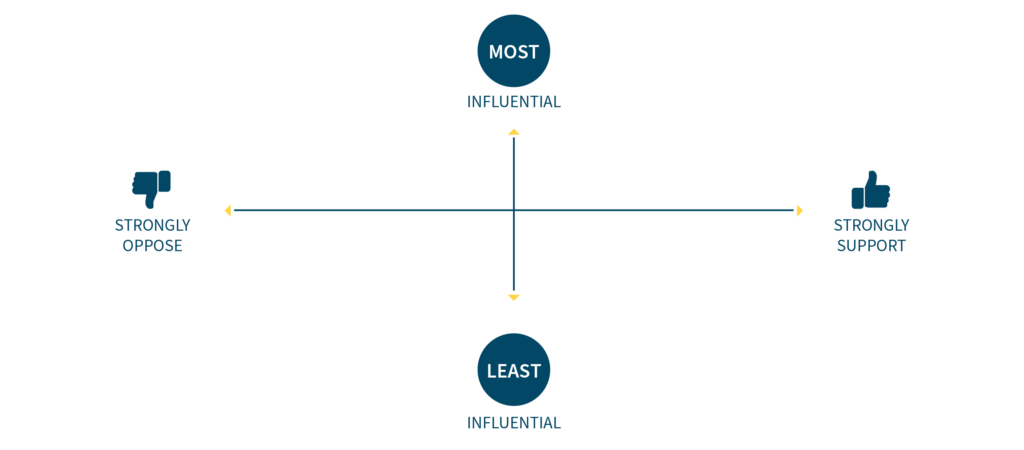Once you understand who you need to move, you’ll need to understand where they stand on your issue. For this phase, you’ll need to develop a power map.
Power maps identify who has influence and how likely they are to support your efforts. Power is fluid, so individuals can and will move around the map as your work develops. Just because someone is opposed today doesn’t mean they’ll be opposed tomorrow. The first iteration of your power map will help you assess who has influence over your issue, who will support you and who is currently opposed, and how you can move both supporters and opponents.
If your change requires a decision by a group of people, such as a city council or commission, your power map should include all the individuals involved and note what group(s) they belong to. Some processes, particularly legislation and funding, require a committee to make a recommendation. For instance, a regulatory change may require agency staff to make a recommendation to a committee that will then refer the recommendation to city council for final approval.
Remember that different players will have different degrees of influence throughout the process. Make separate maps for each stage, so you know who your specific targets are.
Hot Tip
Just because someone has a lot of power doesn’t necessarily mean they will make the decision. Get specific about who is responsible for making decisions. Make sure your map accounts for people’s formal and informal powers. For instance, legislative aides or specific community leaders may have powerful sway over a decision even when they have no formal authority.

